Doing no harm to historically accurate artifacts
By Brandes Elitch
In June of 2008, Dr. Frederick Simeone opened the doors of a unique car museum, dedicated to the spirit of competition, and featuring some of the most valuable and desirable sports and racing cars ever made. About 60 cars are arranged in dioramas, many with a common theme such as Le Mans or the Mille Miglia.
The building itself, located next to the Philadelphia International Airport, is huge, at 75,000 square feet. Some of the cars, such as his Alfa 8C 2900, are so extremely valuable that it is unlikely that this collection will be duplicated anywhere in the world.
Dr. Simeone, the son of a doctor who was also a car collector, spent over 50 years assembling this collection. He was chief of neurosurgery for 25 years at Pennsylvania Hospital, and the author of a popular medical textbook on the spine. Now retired, he devotes much of his time to the museum, recently established as the Simeone Foundation. As I was writing this, (12/09) it was announced that the museum had just acquired one of the five Corvette Grand Sports racing cars, so he is not done collecting yet.
I asked Dr. Simeone about how he got involved in automobile history. It started with visits to the Hershey swap meet with his father, “..a great car guy and my best friend,” said Simeone. “Dad saved a box of sales catalogues he got from dealers, on cars he could not afford when they were new.” For Simeone, the Fall Meet at Hershey became a pilgrimage. “There was no other place to actually see and touch volumes of historic automobile data, or parts.”As a young doctor, he still made time for the annual pilgrimage, but as he explains, “After my engagement, I was somewhat casual about setting a wedding date. My fiancé recommended that we have our honeymoon at Hershey, because she knew full well that this was the only time that I would reliably take off from my busy schedule!” He even managed to get to Hershey when he was at the Mayo Clinic and Harvard Medical School. I think it’s fair to say that, like many of us, to him the lure of Hershey was “the hope for a missed treasure.”
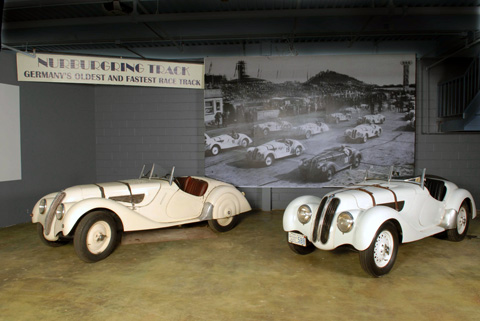
There are two BMW 328s for a reason: The one on the left is totally original while the one at right has been restored. The differences go far deeper than the problem of the non original color on the restored version and illustrate the Simeone goal of preservation over restoration.
Gradually, Dr. Simeone developed a discrete philosophy of collecting, and in a sense, it is related to his profession as a healer, and his avocation as an historian. He has created an “Automotive Hippocratic Oath,” which says “Do no harm to historically accurate artifacts.” While this might seem an obvious comment, the fact and reality is that for the entire history of the automobile it has almost never been practiced, except by a very few people, and certainly not on the auction circuit or the show circuit, nor have I ever heard it enunciated in this precise manner. This is because, as he says, “Until recently, recognition was awarded for cosmetic perfection, sometimes destroying originality in the process.” He asks, as an alternative, “Why not reward the owner for preserving his car, for finding just the right car, for going to extra lengths to keep as much of it intact as possible, to make it a benchmark item, rather than a quest for 100 points?” And then, he elegantly sums up the heart of the matter: “The balance between originality and perfection could be achieved if one realizes that, while cosmetic perfection is very difficult to achieve, historic perfection is even more elusive but therefore more desirable.”
This is perhaps even more difficult with race cars, which were typically damaged or even destroyed. Until the historic racing movement gained sufficient momentum, nothing was more useless or obsolete than last year’s racecar. Some cars were crashed and reconstructed with different bodies. Some cars have been restored with a replica of the original body. Some have body modifications done to similar cars over the course of their racing careers. Some have new motors. Some have even been created from parts, and the factory never made them in the first place (I am thinking of the Maserati 250F racecars made in England from parts, long after the factory had made the original cars). My friend, the late Chris Dickel, rescued a 1938 Alfa sedan which had spent its life in Ethopia, and kept it entirely original. After his death, the car was sold, shipped to Germany, and rebodied as a spyder. A similar thing happened with a car I once owned for forty years, the Lagonda V-12. The factory made two race cars for the 1939 Le Mans, and now there are perhaps a half dozen in existence; even Jay Leno has one. This is not “restoration;” it is “desecration.” One owner even took an original car, one of less than 200 made, and constructed a homemade “woody” version of the famous Hispano tulipwood body car and mounted it on a shortened Lagonda chassis. The result is worse than a desecration; it is an abomination, a joke, an embarrassment.
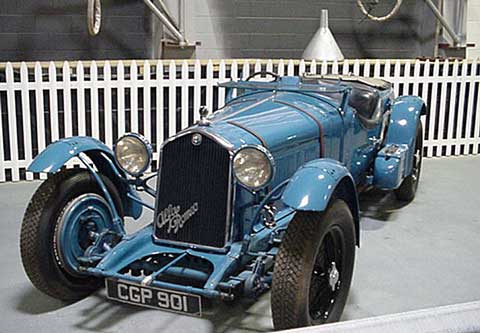
8C 2300 in Le Mans form. They may look restored, but many of the Foundation's cars are far more original than one would expect.
Dr. Simeone sees these creations as what antique collectors call “a marred piece,” and says “Marred pieces may have some historical interest if they are both original, but few serious collectors or museums would consider displaying them.” He is clear that it is the originality that is critical, because “With any historic object, provenance is the most important factor to consider.” He adds, “In time, it will not satisfy to simply admire the craftsmanship of the restoration perfectionist.” Ideally, one would start with an original car, and find supporting data (photos, ads, articles, registration records), contact previous owners, examine the car in great detail, verify numbers and codes, and study the marque history, including talking to experts and joining clubs. I might point out that this is a lot of work, and might take years of research on just one car, particularly if it was a racecar and not a series production car.
Racecars are a special case. Many of them are still aggressively campaigned on the vintage race calendar, where, inevitably, some will be damaged or even destroyed in the give and take of vintage racing. Should these cars be raced, or, as the doctor says, “maybe then they should be allowed to rest quietly and demonstrate their skills like the veteran of foreign wars who now marches in parades, not on battlefields as he did in his competitive past.” This is a tougher call, and a thoughtful person could make arguments on both sides.
But I suspect that Dr. Simeone is on to something here on the subject of cars that are not racecars, and it will be adopted by serious collectors who are not swayed by the hype of the auction circuit or the pretention of the show field. What makes this subject so compelling for him is that his collection is almost entirely all racecars, so he has had to grapple with his philosophy in each individual case, and this is something that most of us do not need to do to this degree with our own collections.
When you visit the museum, you will see the results for yourself.
Related Stories:
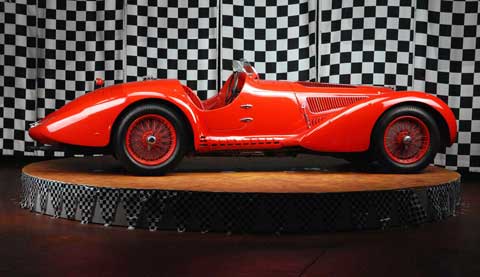
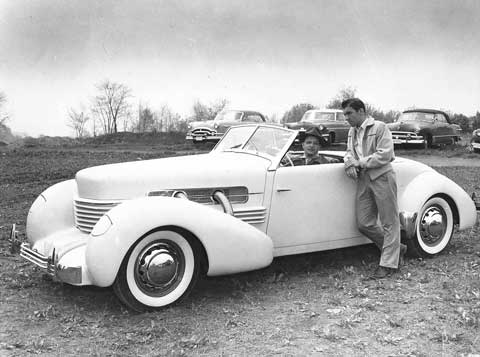
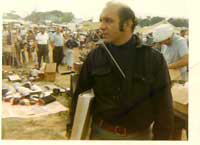
In regard to the ex-Chris Dickel Alfa sedan from Ethopia, it was not 1938, but earlier, as it was a 6c2300B with coachwork by Alfa themselves. A friend of mine, Dave Mericle Jr. made an offer to Chris’ wife, but someone offered more. I never knew where the car wound up, but it’s sad that a 95% complete, totally restorable sedan got butchered.
Yes, Dr. Simione values originality, but he is not afraid to drive the cars in his collection as evidenced by his “Demonstration Days”. On November 28th, 2009, in the back lot of his museum, a 1964 Cobra Daytona Coupe, a Ford GT40 MkII and a 1953 Cunningham C4R were “demonstrated”. These demonstrations are held monthly.
Please visit the website http://www.simeonefoundation.org.
Please visit the museum! You must visit the museum!